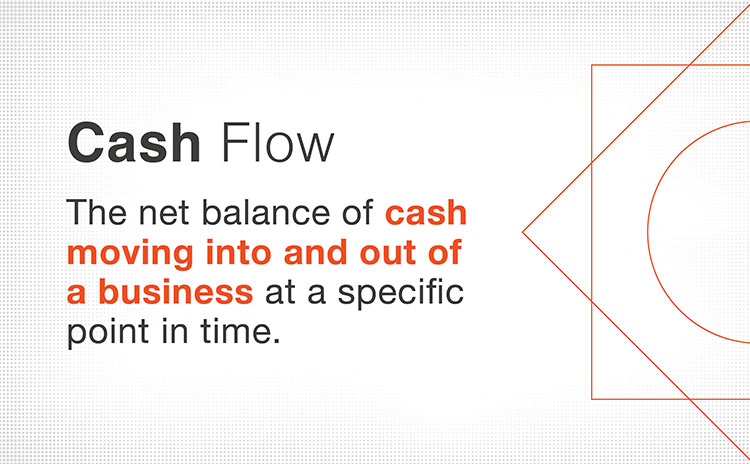How much cash flow should your business have?
Monitoring your cash flow is an essential practice at every stage of the business lifecycle to support goal planning, give a holistic insight into your working capital and spending to ensure you have the funds to cover all operating expenses such as employee salaries, bills, rent, and loans.

Understanding and monitoring your cash flow is relatively straightforward. Cash flow can be defined as the net balance of cash moving into and out of a business at a specific point in time. Generally, many business experts recommend that you have enough cash on hand at all times to cover at least three months’ worth of typical operating expenses. In other words, ask yourself this: if all my business’ revenue suddenly and unexpectedly came to a halt for the next three months, do I have access to enough funds to continue operations during this time?
But where it gets more complicated is knowing the optimal amount of cash your business should have on hand, as this depends on factors like the industry you’re in and the stage your business is at currently.
Using the three-months minimum worth of expenses recommendation as a baseline, here are some things to know to help you determine how much cash flow you need.
Assess where your business stands and where you want to go
Startup phase: Cash flow needs are relatively high when your business is in the startup phase. From hiring a new team of employees to stocking initial inventory and investing in the marketing efforts to get your business off the ground, there’s no shortage of expenses you need to be ready to cover. During this phase, your business should aim to maintain a cash flow that’s substantially higher than the three-month recommendation, if possible.
Growth phase: Once your business is up and running, your cash flow needs aren’t going away. In fact, once many businesses move beyond the startup phase, their cash flow needs increase even more. This occurs if your business is seeking any type of notable growth, such as acquiring new business, breaking into new markets, or expanding the number of employees on your team.
Established phase: If your business has reached a place where you’ve established your market presence in the way you desire, then your cash flow needs can decline compared to the earlier phases. Instead of maintaining such a high cash flow, you might determine the best move is to direct more of your cash towards new investments or distributing stock dividends to shareholders. Any time that profits are high or new investments are being made, you can afford to maintain a lower cash flow.
Exit phase: If you’re on the verge of retirement or are planning to move on from your business, your cash flow needs might go up. As you pay off business debts or consolidate operations, you’re likely to need a relatively high cash flow. If you’re planning to sell your business, a high cash flow can increase the valuation at the time of the sale.
Ultimately, there’s no one-size-fits-all answer for optimal cash flow. That’s why no matter which phase your business is in, monitoring your cash flow on a regular basis is key to staying on track to achieve your goals.



